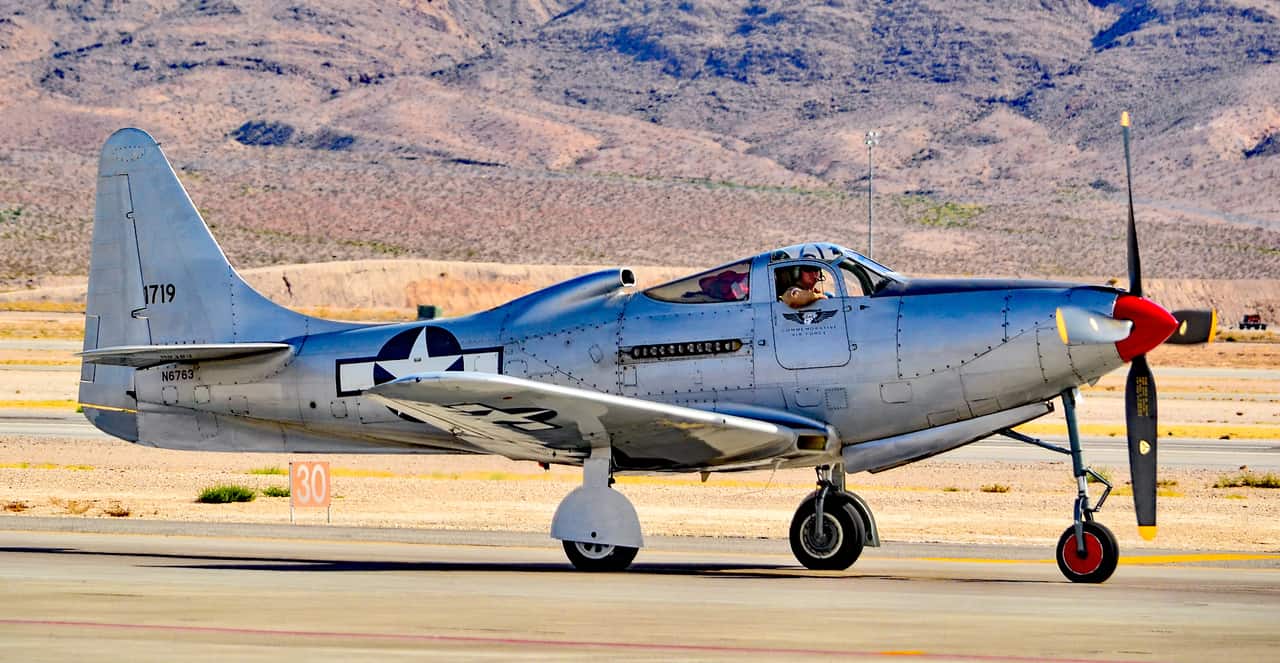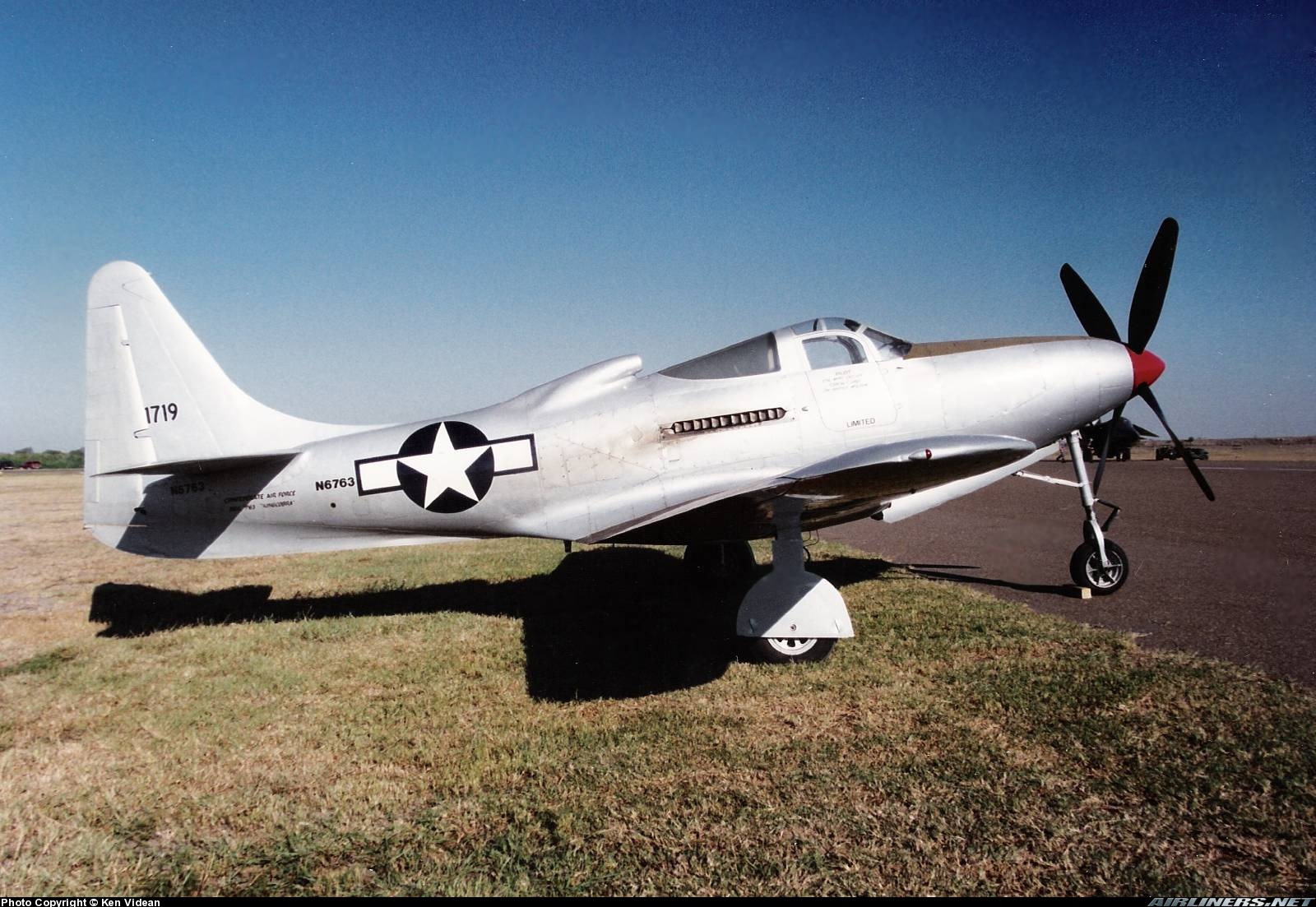The production run of the Bell P-63 Kingcobra during WWII was extensive, totaling over 3,300 aircraft, though it did not break any records. However, the majority of these planes never saw service with the USAAF (United States Army Air Forces), and even those that did were primarily used in non-combat roles. Instead, a curious twist of fate led most Kingcobras into the hands of Soviet and French pilots who operated them on various fronts, including the Eastern Front, over Manchuria, Korea, Algeria, and Indochina. Interestingly, some Kingcobras were still in service with Soviet squadrons when Cold War tensions escalated during the Korean War.
Lessons Learned
The P-63 Kingcobra was essentially an evolution of the earlier P-39 Airacobra design. Bell took into account pilot feedback and made several improvements over the P-39. The new aircraft featured a laminar-flow wing, a redesigned tail unit, and a second remotely mounted hydraulic supercharger to complement the single-stage supercharged Allison V-1710 engine. Additionally, it sported a larger four-bladed propeller in place of the P-39’s three-bladed one. The Kingcobra was larger and heavier than its predecessor but retained key features such as tricycle landing gear, an engine mounted behind the pilot, a car-type cockpit door, and armament consisting of a 1.5-inch cannon firing through the propeller hub and four 0.50-inch machine guns. The Kingcobra made its maiden flight in December 1942, with production deliveries beginning in October 1943.

Kingcobras Disguised as Airacobras
Despite these improvements, the USAAF did not consider the new Cobra satisfactory. Consequently, while a small number of P-63s were retained in the US for testing and training purposes, the majority—approximately 2,500 aircraft—were delivered to the Soviet Union under the Lend-Lease Act. However, they were provided with a condition: the USSR would retain them for future use against Japan after Germany’s defeat.
The Soviets superficially adhered to this agreement, and according to official records of the time, no P-63s were deployed in the European part of the country. Nevertheless, accounts from various German pilots and later Soviet memoirs suggest that numerous Kingcobras were indeed involved in aerial battles against the Luftwaffe, officially documented as Airacobras.
Over Manchuria and Korea
When the USSR finally declared war on Japan in August 1945, the P-63s were officially put into action. They operated over Manchuria and northern Korea, carrying out escort and ground-attack missions. The Japanese air force, having suffered significant losses during the lengthy war in the Pacific, offered limited resistance. As a result, there is only one recorded instance of a dogfight between a Kingcobra and Japanese aircraft, which occurred on August 15 when a pair of Soviet pilots engaged two Japanese fighters. In the ensuing battle, a P-63 pilot shot down one of the Japanese fighters, likely a Nakajima Ki-43 Hayabusa, while another Japanese plane managed to escape.
In the Cold War
After World War II ended, the USSR retained all the Kingcobras received from the US, constituting a significant portion of its fighter fleet. These aircraft were stationed across the country, including Soviet occupation zones in Germany and Austria. They also played a role in pilots’ transition training to jet aircraft, as the Cobras featured a tricycle landing gear similar to that of newer jet designs.
The Kingcobras remained in Soviet operational service well into the early 1950s. By then, the Cold War between the USSR and the US was well underway, exacerbated by the Korean conflict. Although P-63s under the Soviet flag likely never engaged in dogfights with US aircraft, there were reports of an isolated incident when a couple of US P-80 Shooting Stars strafed Soviet P-63s parked at the Sukhaya Rechka airfield southwest of Vladivostok.

In French Service
At least 300 Kingcobras were delivered to the Free French forces, but they saw limited action during WWII. After the war, they were stationed in Algeria and then redeployed to Indochina in 1949, where the French became increasingly involved in a bitter conflict against Viet Minh forces in northern Vietnam. In this theater, the P-63 was primarily used for ground attack missions, dropping bombs and napalm. Approximately 30 aircraft were lost to enemy action and accidents. Soon after, the US began supplying the French forces in Indochina with more advanced aircraft, leading to the removal of Kingcobras from frontline service, with the last combat missions flown in April 1951.









